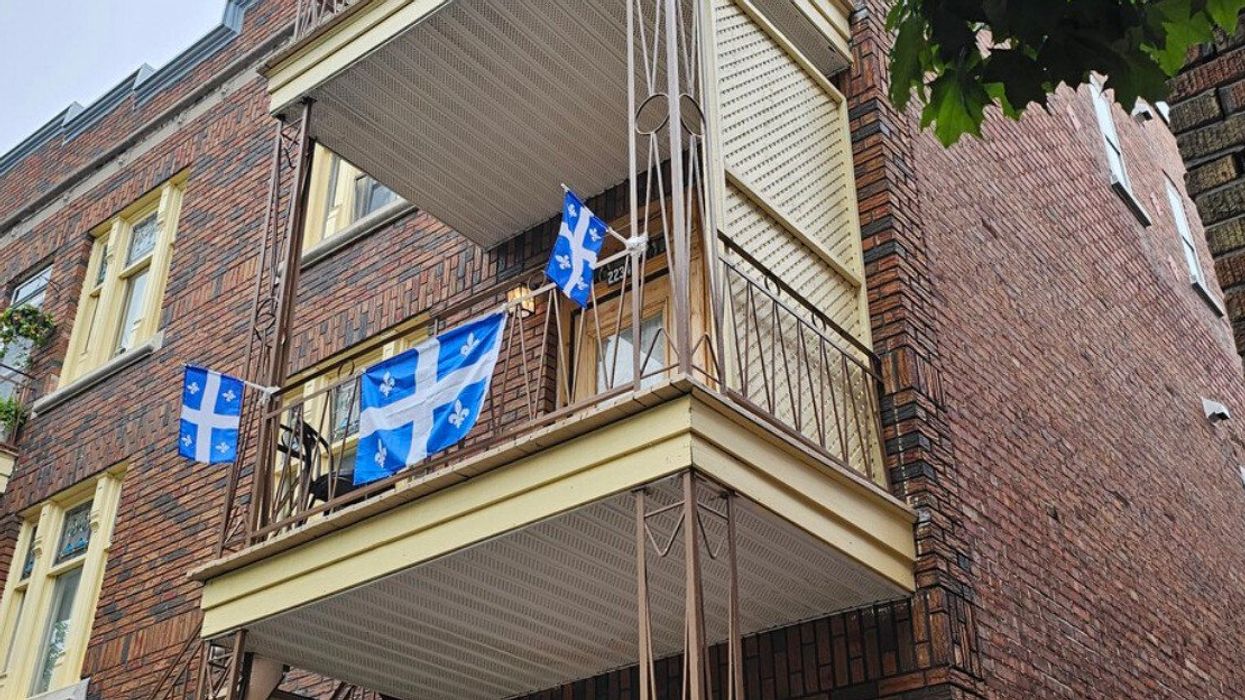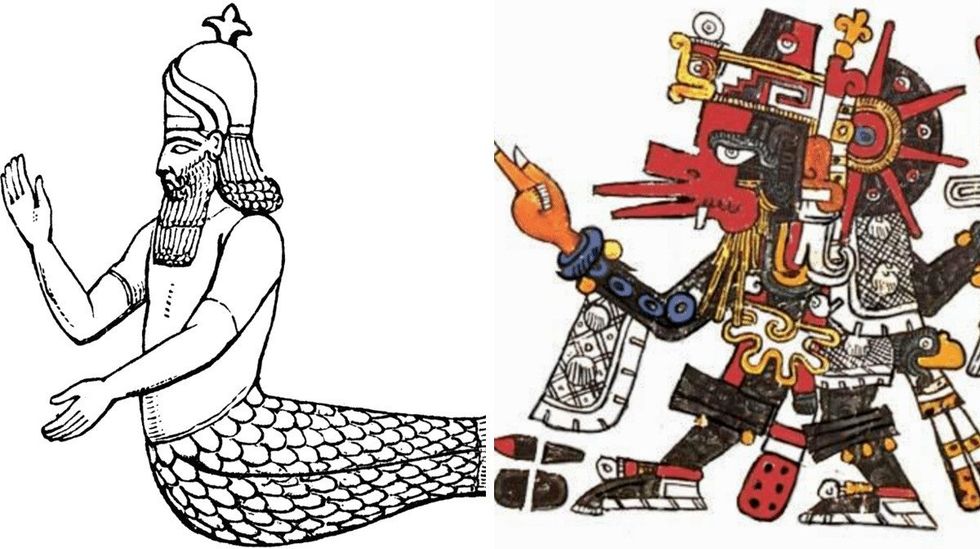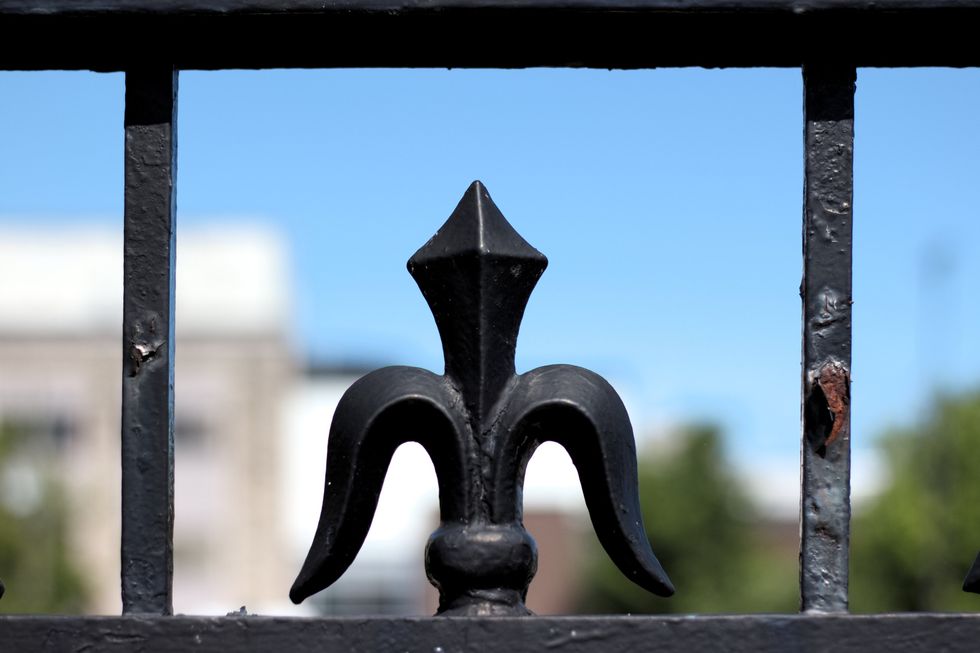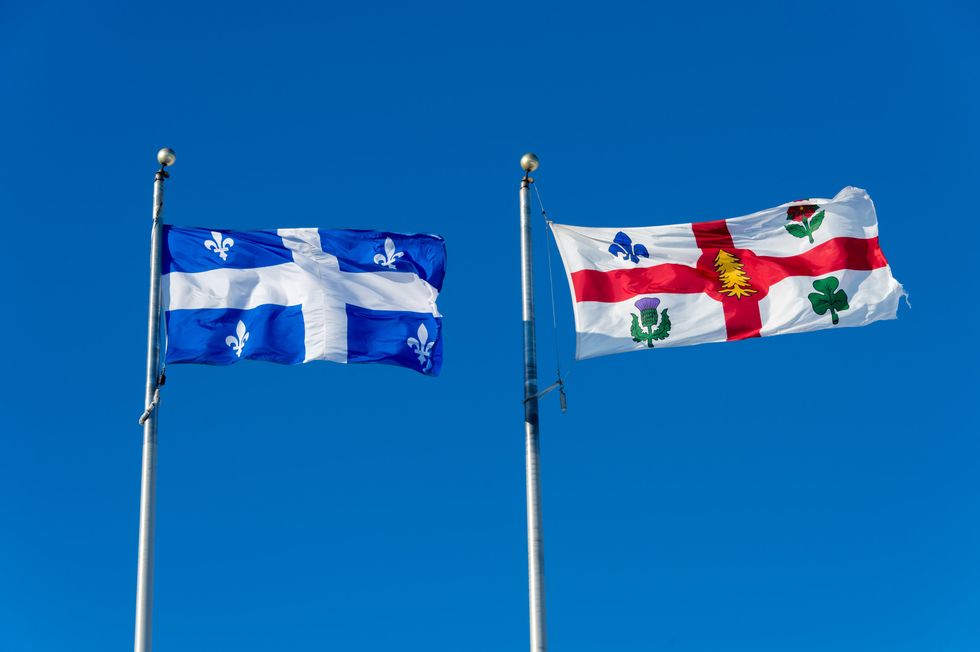On Quebec's St-Jean Baptiste Day The Fleur-De-Lys Is Everywhere — Here's The Origin Of The Symbol
It actually dates back thousands of years. ⚜️

A Montreal apartment decked out in Quebec flags with the fleur-de-lys.
When St-Jean Baptiste Day rolls around, Quebec turns into a field of fleur-de-lys. The symbol sprouts on flags, blooms on shirts, and seeds itself in every festive decoration.
But as much as it has become intertwined with Gallic identity, the emblem's roots transcend French connection.
The fleur-de-lys has been used to mark kings and prisoners, represent armies and sports teams, and its origins can be traced all the way back to the pre-Roman Bronze Age.

Before adorning the Quebec flag, known as the "Fleurdelisé," the symbolic flower graced the artwork of diverse cultures spanning thousands of years. Its earliest known depictions date back to 14th-century B.C.E. Mesopotamia (modern-day Iraq, Syria and Turkey), where it symbolized fertility and purity.
Its influence spread across civilizations, from Egypt and Greece to India and Japan. It can make an appearance on kimonos during the May 5 festivities in Japan when children bathe in iris-infused water to ward off evil spirits.

Around 50 C.E., the Lys River — immortalized in the tales of Asterix and Obelix — reportedly had lily flowers growing along its banks. "Fleur-de-lys" translates to "lily flower," but the symbol we're familiar with more closely resembles the iris, a botanical mix-up of historic proportions.
The symbol's stature rose during the Middle Ages, and by 493 C.E., it became associated with the French monarchy. With King Clovis' conversion to Christianity, the three petals of the fleur-de-lys began to symbolize the holy trinity, the divine right of kings, and the power of French nobility.
In England, it served as a symbol of purity associated with the Virgin Mary, gracing the arms and emblems of noble families with ancestral ties to France. It made its way to Scotland as well, becoming a significant feature in clan heraldry.
Beyond Europe, the symbol holds significance across different regions. In Asia, it symbolizes the third eye in Buddhist art, denoting enlightenment. In North America, it became emblematic of French colonial influence, particularly in Quebec and Louisiana.
The symbol also holds sway in Africa. It symbolized the upper part of the Nile in ancient Egypt, and in Morocco, it indicated historical connections to Europe through the ruling dynasty.

The journey of the fleur-de-lys to North America began with colonialism. Jaques Cartier's arrival in the 1500s laid the foundation for New France, spanning from Acadia to Louisiana. The cultural heritage of French settlers, including the fleur-de-lys, left an indelible mark.
It also seeped into literary history. In the 1844 classic "The Three Musketeers," Milady de Winter, a spy, bore a fleur-de-lys tattoo, a mark given to uncooperative French prisoners, indicating her dangerous persona.
Over the last 400 years, the spread of French heritage in North America mirrored the proliferation of the Fleur. In 2006, after the devastation of Hurricane Katrina, the symbol emerged as a beacon of peace in New Orleans.
Like an iris by the Lys River, the symbol continues to bloom, far from its roots, yet deeply rooted in its origins. So, this St-Jean Baptiste Day, when you see the fleur-de-lys waving proudly, think of it as a vibrant echo of history in the present.
- Parc Jean-Drapeau's Beach Is Opening For The Summer Season ›
- Saint-Jean-Baptiste Day: What’s Open & Closed In Montreal On Quebec’s Fête Nationale ›
- Quebec Is Turning Reddit's Viral Pixel War Into A Love Letter To The Province ›
- What's open and closed in Montreal on Saint-Jean-Baptiste Day aka Quebec's Fête nationale - MTL Blog ›

